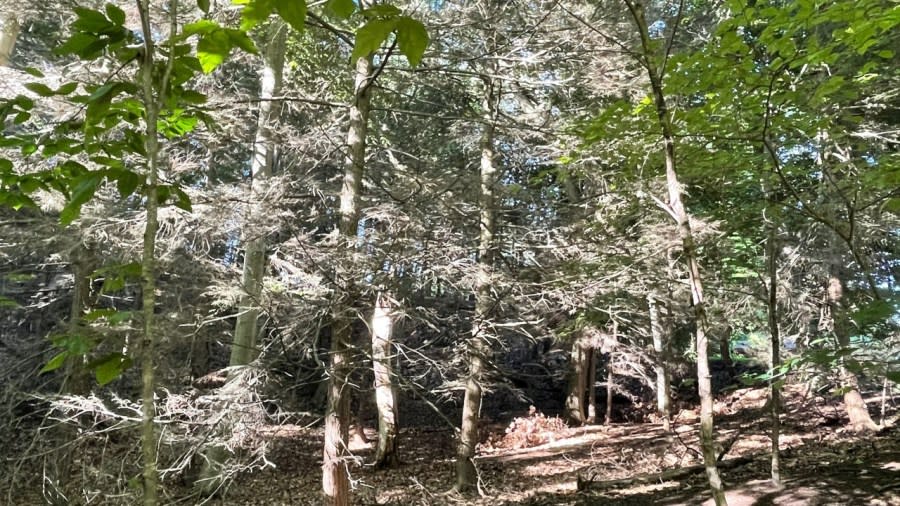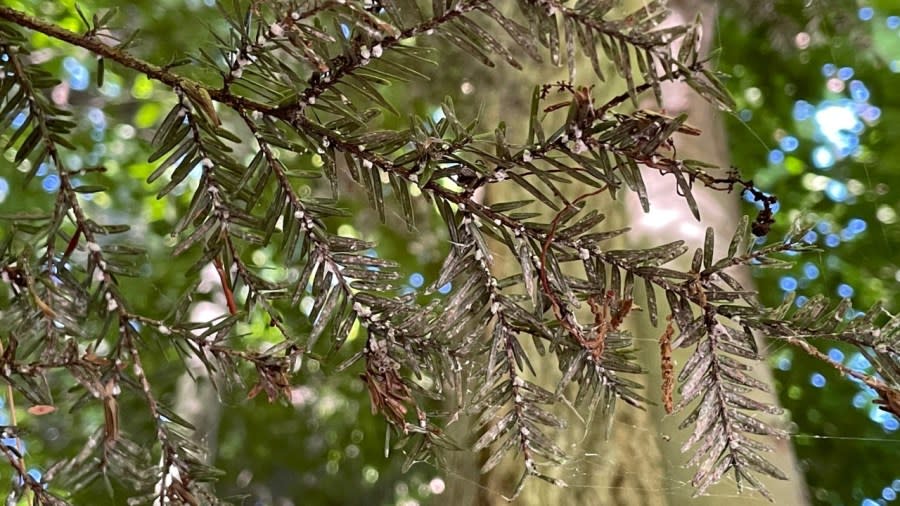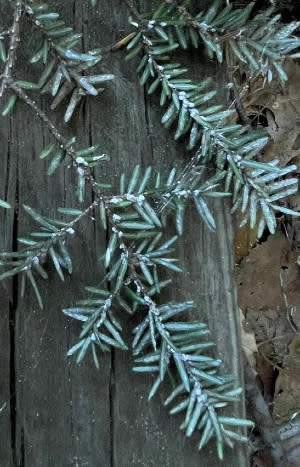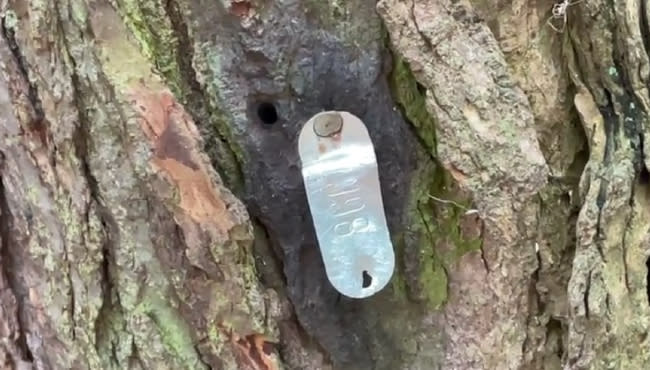Infestations of invasive bug confirmed in Huron-Manistee National Forests

GRAND RAPIDS, Mich. (WOOD) — A spokesperson for the Huron-Manistee National Forests confirms that the hemlock woolly adelgid has been spotted in two areas within the preserve.
Infestations of the tiny invasive insect have been confirmed at Hamlin Lake and at the Nordhouse Dunes Wilderness Area in Mason County.
Carol Young, a forest silviculturist with the U.S. Forest Service, says the agency used DNA trap locations to spot the bugs. Those traps capture DNA released by organisms through vectors, including dead cells, mucus and feces. After the positive tests returned, crews were able to go find and visually confirm the presence of the hemlock woolly adelgid.
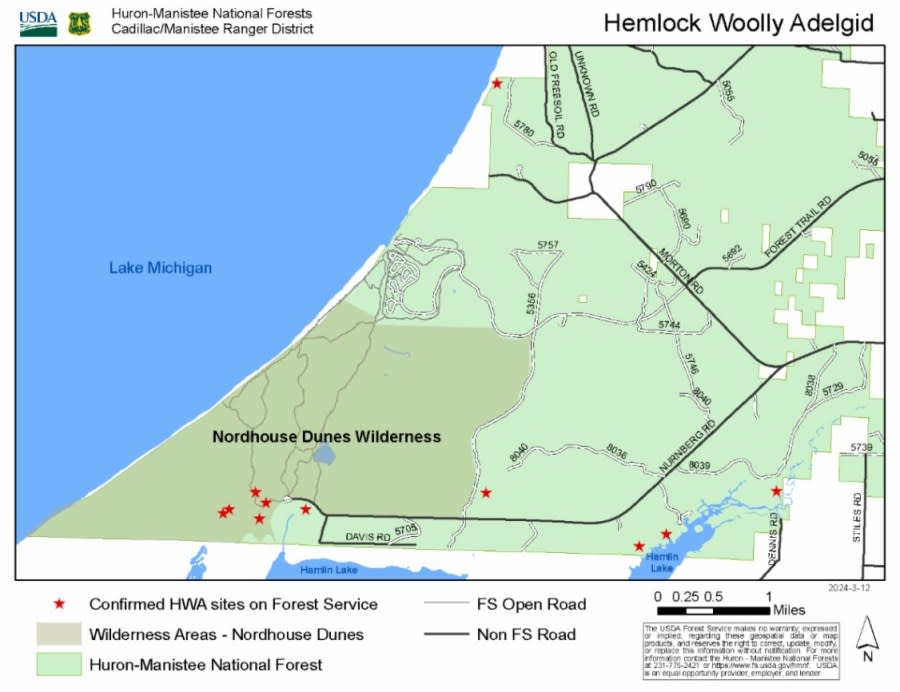
The Forest Service is wrapping up its visual detection surveys for the year, where crews collect and document information within 800 feet of each infested tree.
State approves $3.6 million to ward off hemlock woolly adelgid, other invasive species
“These delimitation surveys are used to set up a perimeter to determine how many trees are at risk of being infected. This helps us create a treatment plan,” Young said in a statement.
Hemlock woolly adelgid infestations have been confirmed in seven Michigan counties, all on the Lake Michigan lakeshore, from Allegan County north through Mason, Benzie and Antrim counties.
Several dying hemlock trees in Lake Harbor Park spotted on July 25, 2022. DNR expert Drew Rayner says the hemlock woolly adelgid is the likely cause. (Matt Jaworowski/WOOD TV8) A close-up look at an Eastern Hemlock tree in Lake Harbor Park fighting an infestation of hemlock woolly adelgid. (Matt Jaworowski/WOOD TV8) When hemlock woolly adelgid feed, the leave behind a small, white cottony ball called an ovisac that forms at the base of the needles. (Matt Jaworowski/WOOD TV8) This photo shows a tag on a hemlock tree in Duncan Woods along with a hole that was drilled to administer a treatment to kill of the hemlock woolly adelgid. (Matt Jaworowski/WOOD TV8)
Adelgids are often spotted by the white, waxy ovisacs they excrete on the trees in the fall and winter where they feed. Those tiny white ovisacs are between one-fourth and one-sixteenth of an inch and can be found on the underside at the base of the hemlock’s needles.
DNR expert Drew Hayner said the bugs primarily spread by hitching rides on of humans and other animals.
Prescribed fire season underway in Huron-Manistee National Forests
“There’s a lot of vectors,” Rayner told News 8 in 2022. “Animals can spread them; birds and wildlife can pick up crawlers. We have crawlers from spring through the early summer that we aren’t really going to be able to see (when) humans and animals brush up against the branches of an infested tree.”
Because hemlock woolly adelgids are pulling nutrients from the trees, the hemlocks stop growing and its needles develop a grayish tone. But with treatment — assuming they are caught in time — the insects are killed and the trees can recuperate.
According to the DNR, Michigan is home to more than 170 million mature hemlock trees, which provide an important habitat and coverage for wildlife during the winter.
If you spot a tree that you believe is infested with hemlock woolly adelgid, do not remove the material. The DNR asks you to take photos and note the location of the tree, then submit the information to the agency. You can learn more about the invasive species through the DNR’s website.
For the latest news, weather, sports, and streaming video, head to WOODTV.com.
